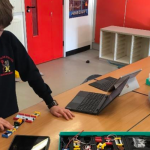Financial literacy is ‘the confluence of financial, credit, and debt management knowledge that is necessary to make financially responsible decisions.’ says Investopedia. Basic financial knowledge helps you manage your finances and savings to avoid debt.
Teaching financial literacy is one of the key elements in the stages of child development because those kids will become adults someday and have to make educated decisions on their finances. By creating financial awareness, you can protect them from bad financial decisions, debts or even bankruptcy in future. So it is quite important to have financial education in schools as well as teaching science skills to children.
What is the Best Age to Start Teaching Financial Literacy?
We form most of the good habits that stay with us for our lifetime in early childhood; as the old saying goes, “You cannot teach an old dog new tricks.” For example, influential research by Sue Bingham and David Whitebread of the University of Cambridge suggests that many of our financial habits are set by age 7. That means we form a basic financial knowledge even before learning how to read.
The best age to start teaching financial literacy is between 3 and 5 years. Then, the parents or the instructors should expand that financial education as the child grows an understanding of the concepts.
How Do You Introduce Financial Literacy to Your Child?
- Be Honest With Them About Money
One of the best healthy development tips for kids and the best ways to support their financial awareness may be having open and honest conversations with them about the family finances. Of course, this does not mean you should share every little detail with them, but it may be best to inform them about your budget or if you are going through tough financial times. That way, they can understand why they can’t buy something non-essential. Creating this kind of financial awareness can also teach when to reduce their expenses in future.
- Give Them Allowance
You may want to supply your child with whatever they want, but that may not be the best idea. For example, giving them money every time they ask usually confuses children later because you create a wrong notion that money is an infinite source. Instead, one of the best ways to teach financial literacy to students is by giving them weekly allowances. This way, children learn about the value of money and budgeting and start prioritising their needs.
How To Help Kids to Save Money
- Discuss Wants and Needs
It is crucial to differentiate what we need and what we want when it comes to managing money. So, start teaching your children how to determine if they need something or if it’s just something they want by using analytical thinking. It helps them to prioritise their needs and save money.
- Set Savings Goals
Having a goal to achieve is much more motivating, especially for children. Or else, they could easily get disrupted and give up on saving money. You can start setting a weekly goal and plan how much money they can save in a month. But it is important to set an achievable amount of money so they wouldn’t get discouraged.
- Urge Them to Make Plans About How They Spend Their Saved Money
Apart from having a goal, a purpose motivates children most in saving money. So encourage your children to plan with their saved money for the future. It can be going to an amusement park, having a special toy or a bicycle they wanted for so long! Dreaming about the long wished thing they can have at the end keeps their saving on track.
- Provide a Place to Save
One of the main things that help children save money is to have a safe place to put it. So get your child a prettily decorated piggy bank. Children love them! They encourage children to save money to fill up the banks. The exciting wait to open their banks at the end of the week or the month is another thing to motivate them.
Activities to Teach Financial Literacy to Kids
Ages Between 3 – 6
Cash Puzzler
This game aims to put shuffled pieces of a puzzle to form a complete bill. You can print or draw every banknote and cut them to exact pieces. After shuffling all the puzzle pieces, choose between different denominations of bills – 5$, 20₺ or any bill of your country’s currency. This game helps little children to differentiate the banknotes and understand their values.
Find The Bill
This game targets to help children recognise the different bills and remember them. Print or draw every bill of your currency 2 times. Put them on the floor or a desk; all shuffled and face down. The child chooses one among the cards on the floor and then has to find the same by picking one after another. If they choose the wrong one, tell them simply to put them back in their place face down again. As they keep playing, they remember which one is where and successfully match them together.
Ages Between 6 – 10
Play Grocery Store Together
There are many different learning styles for kids. One of them is learning through pretend play! Help your children set up their own grocery store with their toys, such as watermelon, tomato, milk, bread, juice, etc. Then give each of them a price – it can be the exact prices on the market. Then act like a customer, choose what you want to buy and let them calculate the total cost of your items. Pay your child with your toy money and let them calculate how much change they should give you back themselves. This game helps them both to calculate and to engage in finance.
Engage Them in Your Real-Life Shopping
Children take up many things from their parents, including their spending habits. So try engaging them in your shopping, whether groceries or clothes shopping. It is also essential to talk to your kids about what you need to buy, what you can give up and what you buy as a luxury. This way, they can see how you manage your shopping: how you prioritise or give up some things.
Teach your children good money habits with Twin app
Twin Store in the Twin app focuses on helping children develop behaviors that build a foundation for good time and money management. They can earn coins as they complete quests and adventures found within our app. Then, they can choose for themselves how they want to spend their coins. They can even buy vouchers (for up to 75% discounts) for hands-on, award-winning Twin Kits with their coins.



